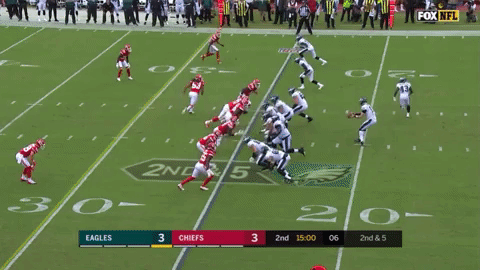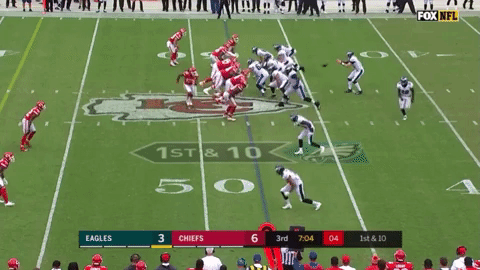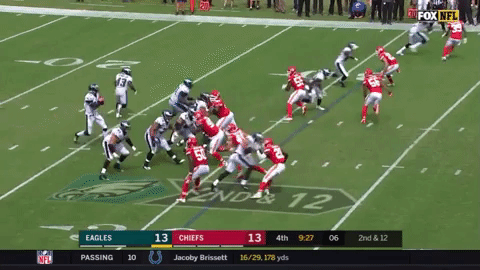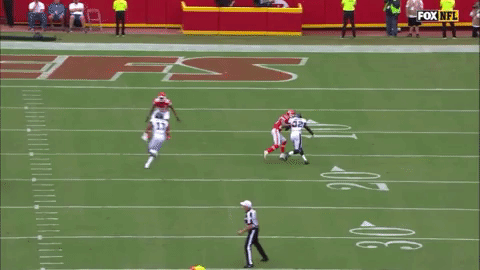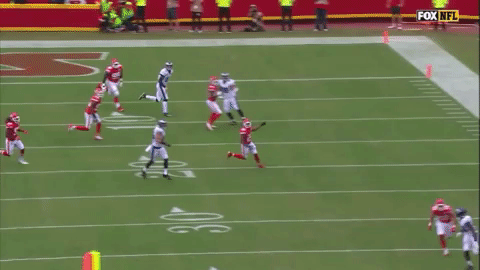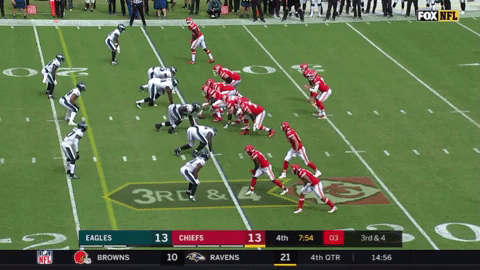Ad Disclosure
Three and Out: Play Calling, Screen Adjustments, and What-Ifs
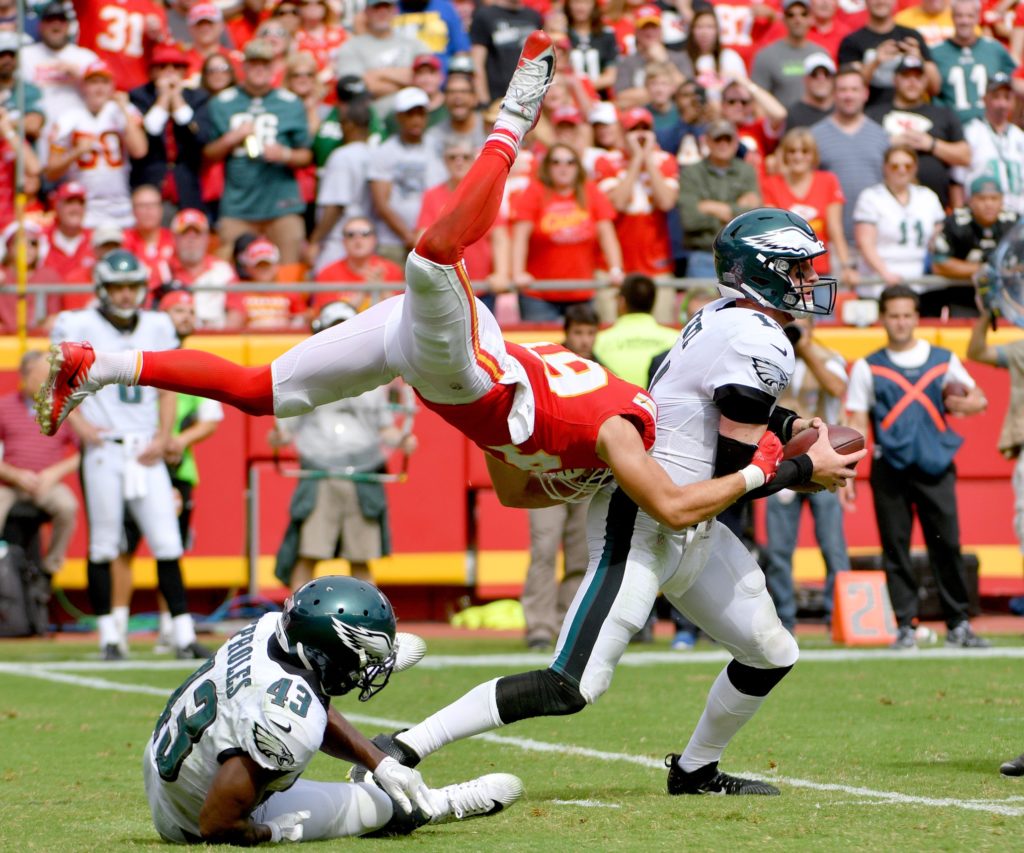
Each Monday during football season, I will be breaking down three key facets of the previous day’s Eagles game in my “Three & Out” series. I may look at specific plays and discuss player performances or big moments in the game, but my overall goal is to bring to your attention some really specific, but important, pieces of the game. I hope you enjoy it.
Now that we’ve had some time to digest it, I suppose the loss could’ve been worse. The Eagles weren’t given much of a chance heading into Kansas City, but they really gave the Chiefs a tough game and even looked like the better team at times.
That said, there’s nothing that sucks worse than losing a winnable game.
Let’s get into it!
Don’t Blame the Running Game, Blame the Play Caller
If an Eagles game was played, and there were no issues with the number of times they ran the ball, would it really be an Eagles game?
The storyline this week will probably focus on the Birds’ inability to run the ball. It will focus on the issues along the offensive line and the lack of talent at the running back position. People will harp on the fact that the Eagles failed to acquire a difference making running back in a draft that many said, Howie Roseman included, was ripe with RB talent.
The biggest issue is not the running game, though, it’s Doug Pederson’s refusal to use it. In yesterday’s 27-20 loss, the Eagles ran the ball only 13 times (Carson Wentz’s scrambles excluded) in 63 offensive plays. Considering the circumstances, that is completely indefensible.
The game actually turned out to be much more evenly matched than many had anticipated. At no point, other than the last few minutes, were the Eagles in a situation in which they needed to throw their way back into contention, like they did in Cincinnati last season. When they did run the ball, they averaged four yards per carry. That kind of efficiency isn’t going to win any games, but it’s not like it was completely ineffective.
The offensive line has struggled, but, individually at least, they are somewhat of a known commodity. LeGarrette Blount may not be anything special, but you don’t play nine years in the NFL without knowing how to run the ball. Wendell Smallwood showed flashes last season of at least being a change of pace runner. The point is, the Eagles do actually have the personnel to formulate at least an adequate running game.
The running game doesn’t even have to be that effective to have an impact on a defense. Even a tackle for loss forces a defense to play the run. On running downs, it at least forces the defensive line to check for the run before getting into their pass rush and keeps linebackers down in the box for that one extra second. That might not sound like much, but when you consider that on an average pass play it takes the quarterback only 1-3 seconds to get rid of the ball, then one extra second of delay can have a major pass rushing impact.
Also, you never know what can happen:
Kareem Hunt had 12 carries for 28 yards outside of his 51 yard TD. Keep plugging on the run, sometimes it pops.
— Bob Wankel (@Bob_Wankel) September 17, 2017
Another storyline this week will be Carson Wentz.
In addition to some really nice plays, he also made a handful of bad decisions and poor throws that hurt the team. What should also be noted is the situation he was put into. Wentz was asked to literally be the Eagles’ entire offense while the Chiefs teed off on him for four quarters. It doesn’t matter how many weapons you put on the field, that’s too much pressure to put on a young quarterback. Wentz shouldn’t feel like he needs to force things, especially in a road game against a top defense.
Building Off of the Swing Pass
Last week, I broke down some of the screen plays the Eagles ran versus Washington and explained why they can be useful for an offense. Kyle and Adam also discussed those plays on Friday’s podcast and mentioned how they’d like to see Pederson use the screen to set up some bigger plays.
While Pederson didn’t build in the deep shot that Kyle and Adam were hoping for, he did add an interesting wrinkle that netted the Eagles a key first down early in the second half. He didn’t use the wide receiver screen against the Chiefs, but he did keep the swing screen in the rotation.
Early in the second quarter, the Eagles throw this swing pass to Darren Sproles, who just barely gains the edge on linebacker Ramik Wilson and skitters down the sideline for 16 yards and first down:
A typical Sproles-ian play.
More interesting than the play itself was the strategy behind it. This play wasn’t run just for the hell of it; its primary purpose was to get Kansas City to reveal how they were going to defend the swing screen, which was having Wilson match Sproles out of the backfield.
When Wilson follows Sproles, he leaves the middle of the field wide open. The Eagles see it and take note.
Later in the game, Pederson calls the play again, this time with Smallwood running the swing. Wentz takes the snap and looks to Smallwood, which helps clear Wilson from the middle of the field. He then turns back and hits Zach Ertz, who is open on a slant across the vacated middle, for a 10-yard gain:
The Eagles run the same play later in the game, and get the same reaction from the Chief’s defense, but Wentz’s pass is batted down:
Even in a loss, it can still be fun to see the game within the game.
Still A Team of What-Ifs
The 2016 season seemed to be defined by “what-ifs.”
What if Ryan Mathews hadn’t fumbled in Detroit? What if Smallwood didn’t fumble in Dallas? What if Wentz’s game-winning pass to Jordan Matthews against the Giants had been just one foot further inside? A 7-9 season could’ve turned out much differently depending on the outcome of just those three plays. There were plenty of other examples I could’ve used, too.
The NFL’s talent margin is razor thin. The difference between a 6-10 and 10-6 team is often just a few plays. Sometimes, teams can be unlucky, but for the most part, good squads know how to make those plays. Others have to learn.
From a talent perspective, nothing separates this Eagles team from the other average-to-good teams in the league. They have their flaws, but so does every roster. The only thing keeping this team from competing for the NFC East or for a playoff spot is the ability to make those critical, game-defining plays.
Last week in Washington, they made those plays. This week, versus stiffer competition, they couldn’t get it done. Looking back, there were several of those opportunities.
Early in the game, Torrey Smith had two key drops that could have drastically changed the outcome. I don’t want to put too much blame on Smith – he was far from the major issue in this game – but those two drops are exactly the kind of catches that good teams convert:
Although I think there’s a very good case to be made for pass interference on both of these plays, each pass him in the hands:
Scoring a touchdown and taking an early lead could’ve been a big statement and confidence booster for both the offense and defense. Instead, the Eagles came away with four less points and the Chiefs won a moral victory after being walked down the field.
At the end of the first half, newly signed rookie kicker Jake Elliot missed a 30-yard field goal that would have tied the game heading into the half. That’s another three points left on the field and a deflating end to what would have been a great way to end the half.
Last, but not least, one of the more frustrating plays of the game:
If Vinny Curry was able to make this play, he pins the Chiefs back around their 35-yard line and forces a long field goal attempt.
Instead, two plays later, Travis Kelce hurdles the entire Eagles defense for a touchdown. Kelce’s score was yet another four-point swing in the game, but, more importantly, it was the play that essentially signaled the end for the Eagles.
Those four plays, in isolation, don’t win or lose the game. But, in totality, they represented an 11-point swing on the scoreboard. These plays represent the small difference between a playoff and non-playoff team.
Just two games into the 2017 campaign, it’s hard to say what type of team the Eagles will be.
Right now, they’re still the team of “what-ifs.”
Sean is a lifelong Philly sport fan, husband, father and football junkie. He spends his days managing risks for a large insurance company and early mornings/nights doing what he loves, watching and writing about the Eagles & Football. Sean is also a contributor at BleedingGreenNation and InsideThePylon.
